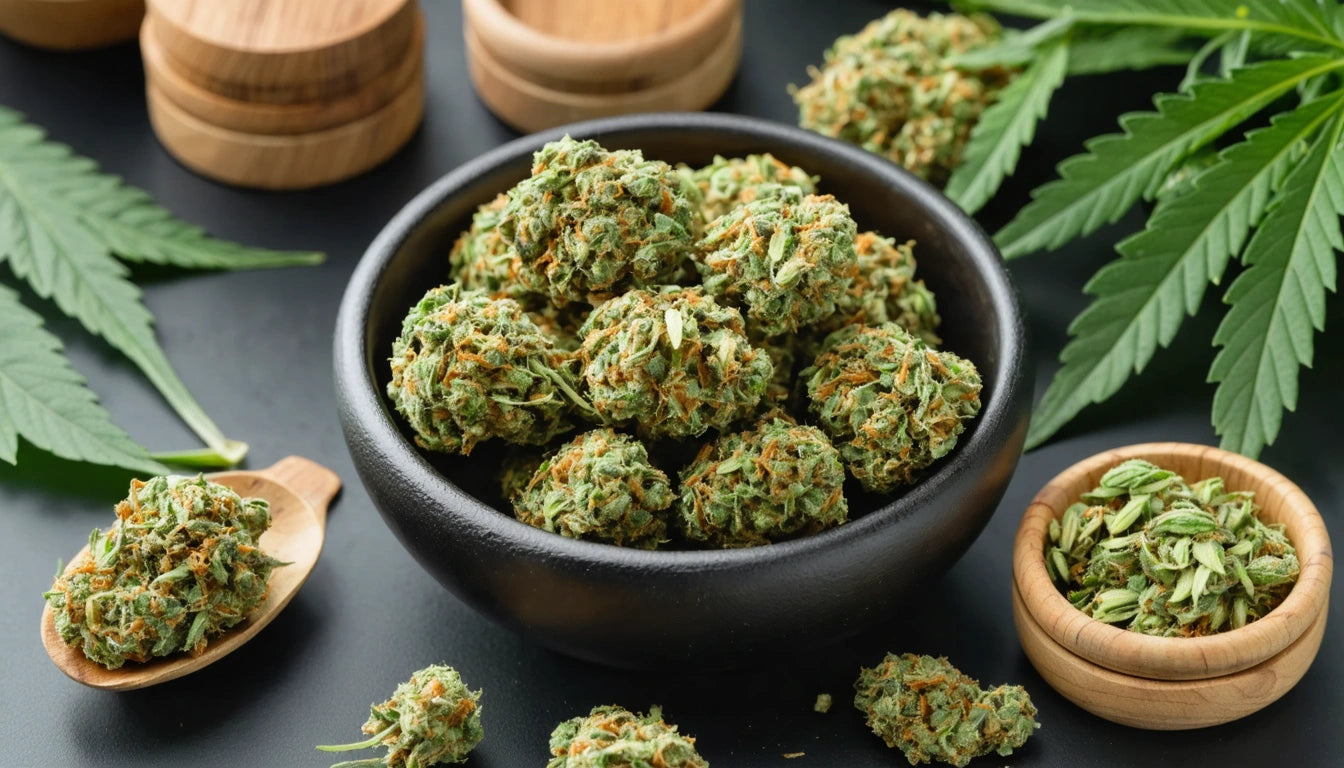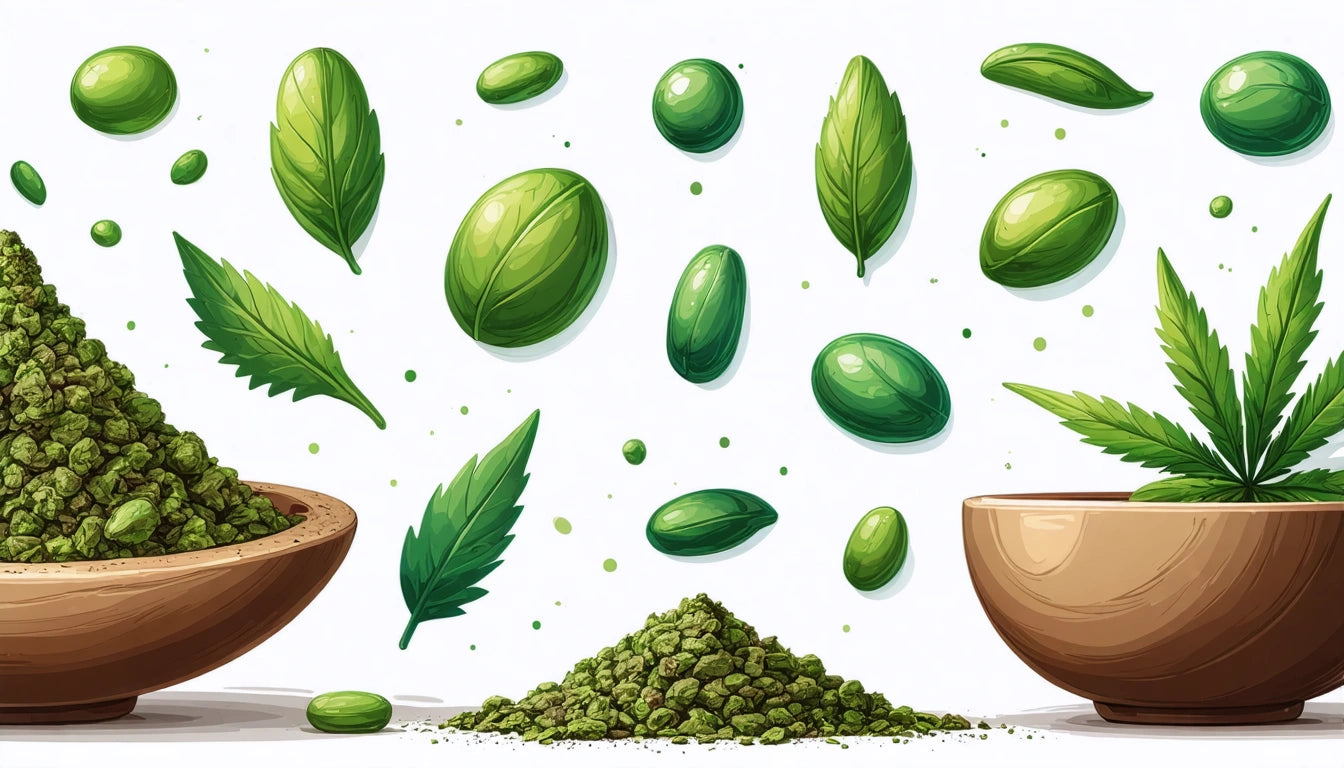Table of Contents
Effective packaging design for cannabis edibles goes beyond protection and compliance. It serves as a critical communication tool that conveys flavor profiles and texture experiences before consumers even open the product. In an industry where sampling is rarely permitted, packaging becomes the primary vehicle for sensory expectations.
Sensory Packaging Fundamentals: Engaging Multiple Senses
Successful sensory packaging engages consumers on multiple levels. Research shows that multisensory packaging can increase perceived value by up to 30% and significantly influence purchase decisions. The most effective designs create a cohesive sensory story that aligns with the product experience.
When designing packaging that communicates flavor and texture, consider these foundational elements:
- Visual elements that trigger flavor associations
- Tactile features that hint at product texture
- Structural design that reinforces product attributes
- Typography that complements flavor profiles
These elements work together to create a sensory expectation that prepares consumers for the actual product experience, enhancing satisfaction when expectations are met.
Visual Cues for Flavor: Color Psychology and Imagery
Color serves as the most immediate flavor cue in packaging design. Specific colors trigger established flavor associations: reds and pinks for berry or fruit flavors, browns for chocolate or coffee, and greens for mint or lime. These associations are powerful enough that they can actually influence taste perception during consumption.
Beyond color, imagery plays a crucial role in flavor communication. According to research on edible buying decisions, photorealistic images of ingredients create stronger flavor expectations than abstract representations. For example, a chocolate edible package showing high-quality cocoa beans creates more authentic flavor expectations than generic chocolate imagery.
Texture Communication: Tactile Elements and Material Selection
Texture expectations can be communicated through both visual and tactile elements. Surface finishes on packaging can subtly reinforce product texture: smooth, glossy finishes for creamy products or matte, textured surfaces for products with more substantial mouthfeel.
Material selection also plays a significant role. For gummies and soft chews, flexible pouches with proper protective sealing mechanisms maintain product freshness while communicating pliability through the packaging itself. The tactile experience of opening these secure containers adds to the anticipation of the texture experience within.
For more premium products, embossing or debossing techniques can create texture patterns that visually communicate mouthfeel. For example, a wavy pattern might suggest a smooth, flowing texture, while a more geometric pattern might suggest a firmer, more structured bite.
Balancing Compliance with Sensory Appeal
Cannabis edibles face strict regulatory requirements that can limit design options. Labeling requirements for cannabis edibles mandate certain warnings, ingredient lists, and dosage information that must be prominently displayed.
Despite these constraints, creative solutions exist:
- Using transparent windows selectively to showcase product appearance while maintaining required opacity standards
- Employing tactile varnishes and finishes that add sensory appeal without compromising warning visibility
- Utilizing inner packaging for additional flavor cues while keeping outer packaging compliant
- Incorporating QR codes that link to expanded sensory information online
The challenge lies in creating packaging that meets all regulatory requirements while still effectively communicating the sensory experience of the product. Brands that master this balance gain significant advantage in the marketplace.
Packaging Formats for Different Edible Types
Different edible formats require specialized packaging approaches to properly communicate their unique sensory attributes. Top packaging options for gummies, chocolates, and beverages vary significantly based on texture and consumption experience.
For gummies and soft chews, resealable pouches with matte/gloss contrast can effectively communicate chewiness. Chocolate products often benefit from rigid packaging with premium finishes that suggest smoothness and richness. Beverages require packaging that communicates refreshment and liquid texture through condensation imagery or flowing graphic elements.
The comparison between custom printed pouches versus rigid containers highlights how structure itself communicates texture. Pouches suggest pliability and softness, while rigid containers imply structure and protection.
Future of Sensory Packaging in Cannabis
As technology advances, new opportunities for sensory communication through packaging continue to emerge. Scent-releasing inks, thermochromic elements that change with touch, and interactive packaging features are beginning to appear in premium cannabis products.
Sustainability considerations are also shaping the future of sensory packaging. Sustainable packaging options for cannabis edibles must balance environmental concerns with sensory communication. Fortunately, many eco-friendly materials offer unique tactile properties that can enhance texture communication.
The most forward-thinking brands are exploring how innovative smart packaging can extend sensory communication beyond the physical package through digital experiences. These technologies allow for expanded storytelling about flavor profiles and texture experiences, creating a more comprehensive sensory narrative around the product.
By thoughtfully integrating visual, tactile, and structural elements that align with product attributes, cannabis brands can create packaging that not only protects and complies but truly communicates the sensory experience awaiting consumers inside.











Leave a comment
All comments are moderated before being published.
This site is protected by hCaptcha and the hCaptcha Privacy Policy and Terms of Service apply.